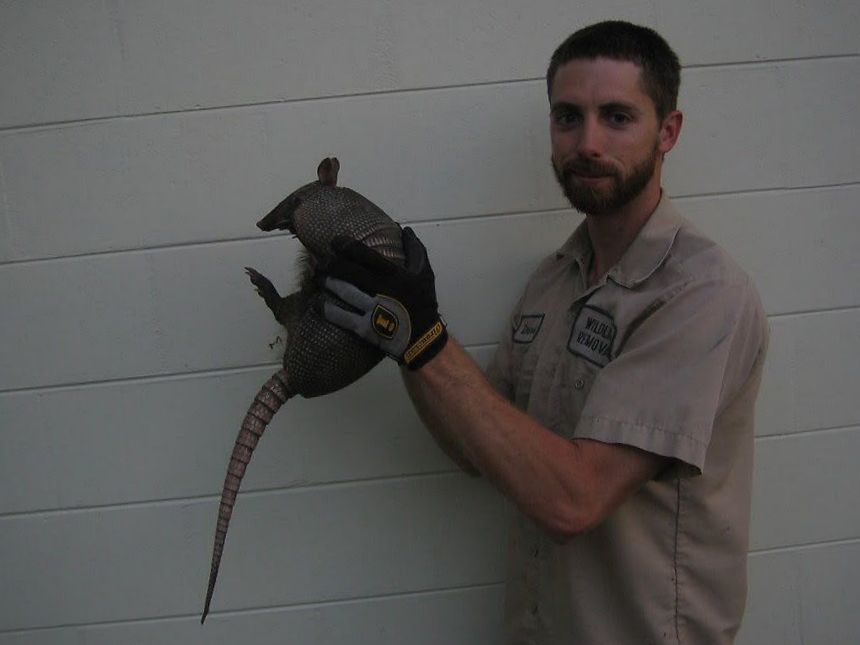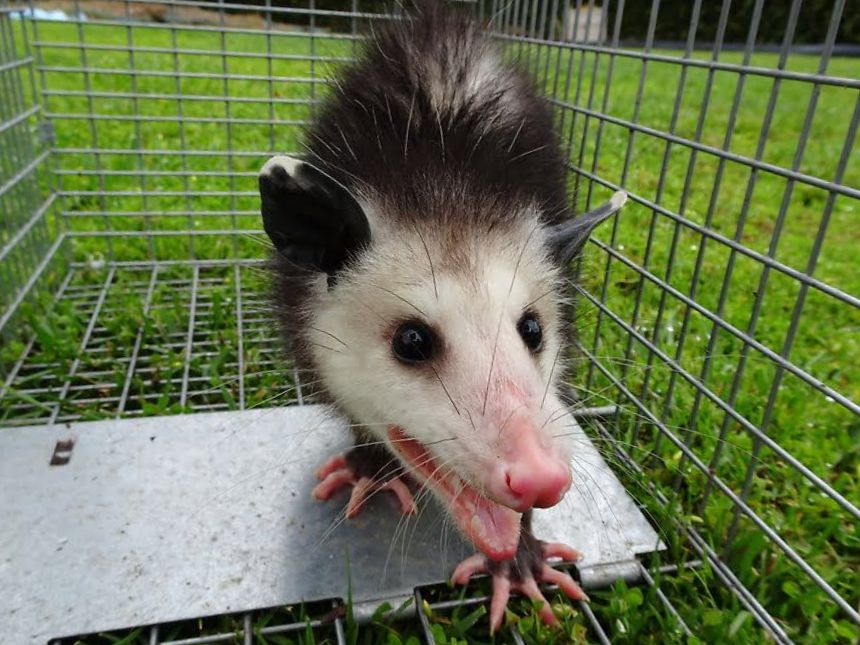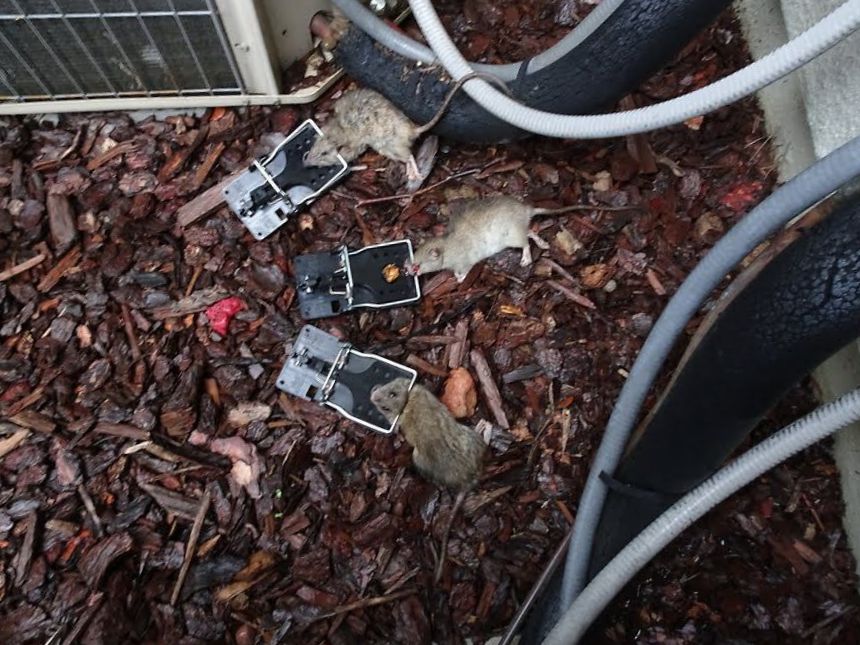- info@pestcontrolwildlife.com
Call us for help in your town
America's Wildlife Experts
Common Wildlife Pests We Handle

The United States is blessed with a diverse variety of wildlife that adds life to nature. Unfortunately, some of these animals are nuisance pests. Over the years, they have learned to acclimatize to human settlements, depending on humans for food and shelter. Rodents like rats, mice, and squirrels thrive in both urban and rural environments, taking advantage of human buildings. Therefore, you shouldn't be surprised if you find raccoons in your attic or a colony of bats in your chimney, or opossums under your deck.
We're going to briefly examine some of the most common nuisance wildlife in the United States - their physical attributes, behavior, and the dangers associated with them.
Raccoons
Raccoons are one of the most common nuisance wildlife species. As adept climbers, they frequently climb up to the attics of homes. Thanks to their strength and dexterity, they identify vulnerable points on the roof to break in through. Female raccoons particularly target the attic because it provides the ideal conditions (warmth and safety) for them to raise their young.
Once they gain access, they will rip apart insulation material and chew on electrical wires to make their nest. For easy access to food, they tip over trash cans, or steal pet food, or kill fishes in the pond, or attack chicken coops, among many others. They are crafty, sneaky omnivores.
Adult raccoons can weigh anywhere from 10 to 20 pounds, though they tend to grow bigger in the northern hemisphere. As nocturnal creatures, they are most active at night.
Eastern Gray Squirrels
Our country is flush with various species of nuisance squirrels, from flying squirrels to red squirrels. However, Eastern Grays are the most prevalent. Like other tree squirrels, the Eastern Grays reside on trees. But as winter or late summer sets in, they favor residing in attics since females give birth biannually to their litters during these periods.
Like all rodents, the incisors of squirrels grow throughout their lifetime. To keep the length of their teeth in check, they will chew on wood, wires, and just about anything they can get their teeth on. Squirrels will also bring in branches and twigs for their nest, as well as grains and nuts for food. Diurnal animals like squirrels are active during the daytime.
Striped Skunks
Skunks are generally black with two white stripes extending from their head to tail. But skunks are more known for their terrible odor. These nasty critters have two glands on each side of the anus that produces a spray, which is a mixture of sulfur-containing chemicals like thiols, responsible for the offensive odor.
They love to reside under crawlspaces, like under the porch, deck, or shed, especially during mating season. Skunks are nocturnal creatures and can feed on almost anything. Because they are quite slow, they often get confronted by pets like dogs. If this happens, there's a good chance your dog will get sprayed.

Opossums
Opossums are fascinating creatures. They are the only marsupials in North America. Marsupials are animals that grow their young in a pouch, like kangaroos and koalas. They have the most teeth of any mammals (50). With their prehensile tail, they can suspend their body's weight from tree branches. Their opposable thumb also bears a striking resemblance to an infant's palm. They have very strong immune systems - strong enough to survive a bite from certain species of venomous snakes.
As opportunist feeders, they can eat almost anything. This partly explains why they are seen around human settlements. Leftovers in the garbage, fruits in the garden, crumbs from the bird feeders, and pet food are on their menu.
Groundhogs (Woodchucks)
Groundhogs are one of the prominent nuisance wildlife burrowers. They are known to make a complex network of underground tunnels. Their incessant digging distorts the entire landscape. Groundhogs are also rodents, and an average adult weighs about 8 to 10 pounds. Female groundhogs give birth to a litter of 2 to 6 pups.
Groundhogs are primarily herbivores. Therefore, they regularly raid gardens to eat veggies and fruits. During the summer, they over-eat to store fat because they hibernate once winter sets in.
Nine-Banded Armadillos
Armadillos are easily recognizable by their hard, bony shells. They are prevalent in the southern states, and they are known for burrowing large holes into the ground. They do this in search of worms and grubs, which are their primary diet. The holes they dig disfigure the entire landscape.
Armadillos are known to carry leprosy - they are the only wild animals other than humans upon which the picky and pernicious M. leprae can survive. Another interesting fact about armadillos is that they always give birth to four identical quadruplets.
Armadillos are primarily nocturnal, but they are sometimes active during the day. Nine-banded armadillos can weigh up to 12 pounds, and they can live for up to 12 to 15 years.
Moles
In the United States, Eastern moles are the most common species. Moles are a common nuisance species because they dig a network of tunnels and chambers, distorting the landscape. Moles live in this sophisticated tunnel network they build.
Although moles are small - weighing 3 to 5 ounces and about 6 to 8 inches long - they have a voracious appetite. Primarily, they feed on worms, grubs, and underground insects. Moles are typically territorial, but during the winter season, they come together to breed. Moles are considered a nuisance because of the destruction they wreak on the landscape.
Snakes
There are about 130 species of snakes in North America, making snakes one of the most diverse reptiles in the region. Luckily, the vast majority are nonvenomous. Examples include the copperhead, cottonmouth, and coral snake. Only 20 species are venomous, of which rattlesnakes are the most common. In general, the behavior of snakes varies greatly, based on the species.
Most people cannot successfully distinguish between a venomous and nonvenomous snake, that's why it is advisable to stay away from any snake species you see. Call a snake removal specialist so they can help you identify and relocate it.

Rats and Mice
Rats and mice are two of the most detested critters commonly associated with filth. In North America, the two predominant species of rats are the roof rat and Norway Rat. Roof rats are smaller and weigh about 6 to 10 ounces. They tend to reside in warmer climates and inhabit elevated areas, such as trees or attics. Norway rats weigh about 10 to 16 oz., and they have shorter tails. They prefer colder climates, and they primarily live on the ground.
Rats and mice are highly intelligent, opportunistic feeders that can get into homes through holes the diameter of a coin. Although rats do not live long (2 to 3 years), a population can swell from two rats to around 1,200 in a year! Rats also spread diseases.
Bats
There are three main bat species in the US: the Little Brown Bat, the Big Brown Bat, and the Mexican Free-Tail Bat. While the former two are prevalent in the northern states, the latter is common in the south. Bats play a fundamental role in the ecosystem as they help to keep the population of insects in check. Moreover, some bat species help in the pollination of certain fruits.
Major conflict arises when a bat colony starts residing in your attic or chimney. With time, the colony can grow to contain hundreds of bats. What this means is an accelerated accumulation of droppings (guano). Bat guano is highly corrosive, and it can speed up the rusting of metallic structures. Furthermore, guano contains spores of fungi that can cause histoplasmosis when inhaled. This condition affects the respiratory system and can be fatal if left untreated.
Bats are the only mammals with the ability to fly. Moreover, they can live up to 18 years.
Pigeons
Feral pigeons are commonly spotted in urban centers. They are probably the most common city pests. Although some people take pleasure in feeding them, they can cause serious problems once they become a nuisance.
Pigeons sometimes reside in the attic or on the roof. To build their nest, they'll bring in all kinds of materials, including leaves, twigs, and branches. Moreover, they litter the entire space with their droppings, which is not only unsanitary but also a potential health risk.
Pigeons mate all year long. And so, they nest any time of the year. Pigeon eggs take 19 days to hatch. Within six months, the chicks become adults. Pigeons can live anywhere from 3 to 5 years in the wild.
Other Nuisance Wildlife Species
This list is in no way exhaustive as there are thousands of nuisance species in North America. Some of the other common ones include:
- Beavers
- Foxes and coyotes
- Stray cats
- Deer
- Ravens
- Woodpeckers
- Boars... and more.
Having adequate knowledge of the invasive species will help in developing an effective removal strategy. That's why it's always preferred to involve a wildlife professional when dealing with an infestation problem. They have the know-how and tools required to help you promptly and humanely solve your infestation problem.


















